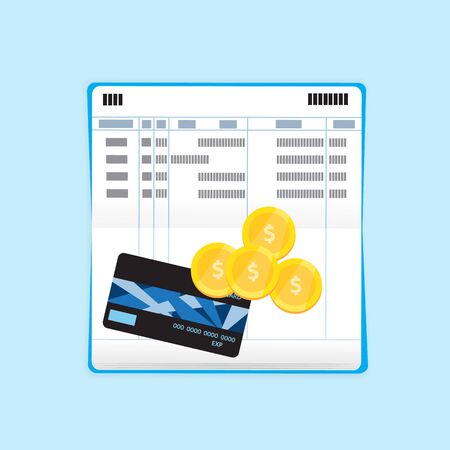1. Assess Your Current Financial Situation
Why Understanding Your Finances Matters
If you want to get out of credit card debt, the first step is to know exactly where you stand. Taking an honest look at your finances helps you create a solid plan and prevents surprises along the way.
How to Review Your Credit Card Statements
Start by gathering all your credit card statements from the last few months. Go through each statement and take note of:
- The total balance on each card
- The interest rate (APR) for purchases and cash advances
- Minimum payment required
- Due dates
- Any recent fees or penalties
Sample Credit Card Overview Table
| Credit Card | Total Balance | Interest Rate (APR) | Minimum Payment | Due Date |
|---|---|---|---|---|
| Visa Platinum | $4,200 | 19.99% | $85 | 15th of each month |
| Chase Freedom | $1,600 | 22.49% | $40 | 5th of each month |
| Discover It | $800 | 16.99% | $25 | 20th of each month |
Calculate Your Total Debt and Payments
Add up the balances from every card to see how much you owe in total. Also, calculate how much youre paying monthly towards minimum payments. This gives you a clear starting point for making progress.
Total Credit Card Debt Calculation Example:
- $4,200 + $1,600 + $800 = $6,600 total debt
- $85 + $40 + $25 = $150 total minimum monthly payment
Understand Your Spending Habits
Your statements also reveal where your money goes. Look for patterns like frequent dining out, online shopping, or recurring subscriptions. Identifying these habits can help you spot areas to cut back and prevent new debt from piling up.
Assessing your current financial situation sets the foundation for effective credit card debt reduction. With a clear picture of your balances, payments, and spending habits, youll be ready to move forward with confidence.
2. Create a Realistic Budget and Expense Plan
Why a Budget Matters for Credit Card Debt Reduction
If you want to get serious about paying off your credit card debt, having a clear and realistic budget is absolutely essential. A good budget helps you keep track of where your money goes each month so you can make sure your bills are paid, your essentials are covered, and you have enough left over to put toward reducing your debt.
Steps to Building a Practical Monthly Budget
- List Your Monthly Income: Write down all the money you receive each month—this could be from your job, side gigs, or any other sources.
- Identify Essential Expenses: These are things you absolutely must pay for, such as rent or mortgage, groceries, utilities, transportation, and insurance.
- Add Up Minimum Debt Payments: Include the minimum payments required on all your credit cards and loans.
- Track Non-Essential Spending: This includes eating out, entertainment, shopping, subscriptions, and anything else that isn’t absolutely necessary.
- Set Aside an Amount for Debt Repayment: After covering essentials and minimums, decide how much extra you can pay toward your credit card balances each month.
Sample Budget Table
| Category | Monthly Amount ($) |
|---|---|
| Total Monthly Income | 3,500 |
| Rent/Mortgage | 1,200 |
| Groceries | 400 |
| Utilities (Electricity/Water/Gas/Internet) | 250 |
| Transportation (Gas/Transit) | 150 |
| Insurance (Health/Auto/Renters) | 300 |
| Minimum Credit Card Payments | 200 |
| Extra Payment Toward Debt | 250 |
| Savings/Emergency Fund | 100 |
| Non-Essential Spending (Dining Out/Entertainment) | 150 |
| Total Expenses & Allocations | 3,000 |
| Leftover (To adjust as needed) | 500 |
Tips for Sticking to Your Budget in the US Context
- Avoid Lifestyle Creep: Just because you get a raise doesn’t mean you should spend more on wants. Use extra income to speed up debt repayment instead.
- Categorize with Apps: Use budgeting tools like Mint or YNAB that connect to American banks and credit cards to track every dollar automatically.
- Create Sinking Funds: Plan ahead for big annual expenses like car registration or holiday gifts by setting aside a little each month.
- Pare Down Subscriptions: Review monthly streaming services and memberships—you might be surprised at what you can cut without missing much.
- Meal Planning: Groceries are often cheaper than eating out. In the US, even small changes like packing lunch can add up fast!
- Aim for Progress, Not Perfection: If you overspend one month, don’t give up. Adjust your plan and keep moving forward.
The Bottom Line: Make Your Budget Work For You
The best budget is one that fits your real life. Focus on covering essentials first and put as much as possible toward your credit card debt each month. Even if progress feels slow at first, these smart spending habits will add up over time and help you reach financial freedom faster.

3. Choose a Debt Repayment Strategy
When it comes to tackling your credit card debt, having a clear strategy can make all the difference. In the US, there are two popular and effective methods to help you prioritize and pay off your balances: the debt snowball and the debt avalanche techniques. Each method has its own unique benefits, so lets explore how they work and help you decide which one might fit your financial situation best.
Debt Snowball Method
The debt snowball method focuses on paying off your smallest credit card balance first while making minimum payments on your other cards. Once the smallest debt is cleared, you move on to the next smallest, gradually building momentum as you see your debts disappear one by one. This approach can be highly motivating if you need quick wins to stay encouraged.
How the Debt Snowball Works
| Step | Action |
|---|---|
| 1 | List your credit card debts from smallest to largest balance. |
| 2 | Pay as much as possible toward the smallest debt. |
| 3 | Make minimum payments on all other debts. |
| 4 | Once the smallest debt is paid off, repeat with the next smallest. |
Debt Avalanche Method
The debt avalanche method is all about saving money on interest. You focus on paying off the credit card with the highest interest rate first while making minimum payments on your other cards. After clearing the highest-interest debt, you move to the next highest, and so on. Over time, this technique can save you more money compared to the snowball method.
How the Debt Avalanche Works
| Step | Action |
|---|---|
| 1 | List your credit card debts from highest to lowest interest rate. |
| 2 | Pay as much as possible toward the highest-interest debt. |
| 3 | Make minimum payments on all other debts. |
| 4 | After paying off the top-rate debt, tackle the next highest rate. |
Which Strategy Should You Choose?
If youre motivated by seeing results quickly, the snowball method might keep you inspired. If saving money on interest is your main goal, consider using the avalanche method. Some people even combine both approaches based on their needs and circumstances. Whichever path you choose, having a structured plan will boost your confidence and keep you moving toward financial freedom.
4. Negotiate Lower Interest Rates and Consider Balance Transfers
Find Out How to Work with Credit Card Companies to Secure Lower Interest Rates
If you’re struggling with credit card debt, one of the quickest ways to make a difference is by lowering your interest rates. Many people don’t realize that credit card companies may be willing to work with you if you just ask. Here’s how you can do it:
Steps to Negotiate Lower Interest Rates
- Call Your Credit Card Issuer: Use the customer service number on the back of your card.
- Be Polite and Prepared: Explain that you’re a loyal customer and have been making payments on time.
- Mention Better Offers: If you’ve received lower rate offers from other companies, mention them during the call.
- Ask Directly: Simply ask if they can lower your interest rate due to your good payment history or financial hardship.
- Get Confirmation in Writing: If they agree, ask for written confirmation of the new rate.
Sample Script for Calling Your Credit Card Company
| What You Say | Purpose |
|---|---|
| “Hi, I’m calling to see if you can lower my interest rate. I’ve been a good customer and always pay on time.” | Shows loyalty and good payment behavior |
| “I’ve received offers from other companies for lower rates. Can you match or beat those offers?” | Puts competitive pressure on them |
| “If you could reduce my APR, it would help me manage my payments and stay with your company.” | Makes your request clear and reasonable |
Learn About Balance Transfer Offers and Their Potential Impact
A balance transfer means moving your high-interest credit card balance to another card with a lower or 0% introductory APR for a set period (often 6–18 months). This can save you money on interest while you pay off your debt faster. However, it’s important to understand how these offers work in the U.S.:
Balance Transfer Pros and Cons Table
| Pros | Cons |
|---|---|
| – Save money on interest – Pay down principal faster – Simplify payments if consolidating multiple cards |
– May include a transfer fee (usually 3–5%) – Introductory rate is temporary – Requires good/excellent credit to qualify – New purchases may have higher rates |
Tips for Using Balance Transfers Wisely:
- Read the fine print: Know how long the promotional rate lasts and what the regular APR will be after.
- Avoid new purchases: Try not to use the new card for spending, as those charges might not get the low intro rate.
- Create a payoff plan: Divide your balance by the number of promo months so you know how much to pay each month to clear your debt before interest kicks in.
- Factor in transfer fees: Make sure the savings from lower interest outweigh any one-time fees charged for transferring your balance.
Tackling high interest rates is key to effective credit card debt reduction. Whether negotiating directly with your lender or exploring balance transfers, these strategies can help put more of your hard-earned money toward actually paying down your debt instead of just covering interest charges.
5. Seek Professional Help and Utilize Resources
If you’re feeling overwhelmed by your credit card debt, remember you’re not alone. There are many reputable organizations and tools in the United States designed to help people just like you get back on track. Reaching out for professional assistance can make a huge difference in creating a plan that works for your unique situation.
Nonprofit Credit Counseling Agencies
Nonprofit credit counseling agencies offer free or low-cost advice from certified counselors who understand the ins and outs of managing credit card debt. These agencies will review your finances, help you create a budget, and explain your options without judgment. Always look for agencies accredited by the National Foundation for Credit Counseling (NFCC) or the Financial Counseling Association of America (FCAA).
What Do Credit Counselors Provide?
| Service | Description |
|---|---|
| Budget Review | Analyze your income, expenses, and debts to find areas for improvement. |
| Debt Management Plans (DMPs) | Set up structured repayment plans with possible lower interest rates negotiated with creditors. |
| Financial Education | Provide workshops and resources to boost your financial literacy. |
| Ongoing Support | Offer guidance and encouragement as you work towards becoming debt-free. |
Debt Management Programs (DMPs)
If you qualify, a Debt Management Program through a nonprofit agency can consolidate your unsecured debts into one monthly payment. The agency negotiates with your creditors to potentially lower your interest rates or waive certain fees, making it easier to pay off what you owe faster. DMPs are not loans—they’re structured repayment plans managed by professionals.
Benefits of DMPs:
- Simplified payments—just one monthly bill instead of several.
- Potentially reduced interest rates and waived late fees.
- No need for a new loan or further damage to your credit score if payments are made on time.
- Professional support every step of the way.
Online Tools for Americans Tackling Credit Card Debt
The internet is full of helpful resources tailored to Americans looking to reduce their credit card balances. Here are some popular options:
| Resource Type | Name/Example | How It Helps |
|---|---|---|
| Budgeting Apps | Mint, You Need a Budget (YNAB) | Track spending, set savings goals, and monitor debt payoff progress. |
| Debt Calculators | NerdWallet, Bankrate Debt Payoff Calculator | Estimate how long it will take to pay off debt with different payment strategies. |
| Counseling Agency Locators | NFCC.org, FCAA.org | Find trustworthy local agencies for personalized advice. |
| Educational Content | CFTC.gov Money Tools, MyMoney.gov | Access articles, videos, and worksheets on debt reduction strategies. |
Take Action Today!
If you’re ready to make a change, reach out to a nonprofit credit counselor or explore online tools that fit your lifestyle. Asking for help is a sign of strength—and an important step toward financial freedom.


